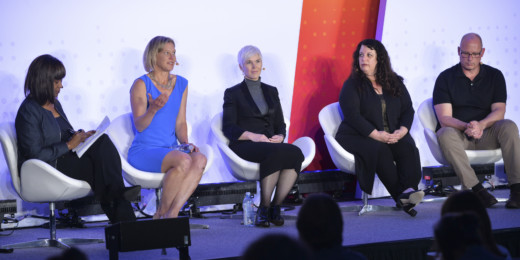A lot of people grouse about the erosion of their relationship with their doctors since the introduction of electronic medical record systems.
Maybe I'm just lucky, but I've had the opposite experience. I feel more connected to my current physician than I have others in the past, and that's only partly because she engaging and empathetic.
Mostly, it's because interactions with her and her staff no longer involve me wasting time waiting to make appointments, get test results, fill prescriptions, or even ask questions about my health. Direct conversations with my doctor -- via email, text, or by phone -- happen at times that work for me. And, finally, if I need to check something in my medical record, I can access it online in a matter of seconds.
At Stanford Medicine, that's only one example of the kind of digital technology that is being tapped to transform the future of health care, a subject we explore in the latest issue of Stanford Medicine magazine.
"We've embraced this transformation in every regard -- identifying 'digitally driven' as one of the key pillars in the new integrated strategic plan that will inform and guide our strategy for the future of Stanford Medicine," Lloyd Minor, MD, dean of the School of Medicine, says in his letter introducing the magazine.
That, he says, means taking advantage of high-tech, without losing the essential element of human touch, to ensure a health care future that is both proactive and personalized.
Themed stories in the magazine explore ways the latest technology has created opportunities for innovation in medical education, diagnostics and patient care, and to better understand what makes our bodies and minds tick. Some examples:
- A Stanford neuroscientist and colleagues are building a virtual hippocampus to better understand the area of the brain that forms and retains memories, and to better treat neurological disorders.
- A surgeon, educator and innovator has developed sensor-enabled training tools that are designed to advance the use of touch in diagnostics.
- A young computer scientist helped design a program to assess clinicians' surgical skills.
- A researcher is creating digital interventions for use in our cars, home and workplaces to empower us to better manage our well-being, and writer Hanae Armitage gave some of his technology a spin.
- More physicians are taking advantage of electronic health records to better collaborate with each other and patients to improve care; and at a national symposium on EHRs, physicians explored ways to update EHR technology to enhance clinical decision-making.
- Four unique programs, including the use of holograms to enable more precise removal of diseased breast tissue and an app that uses Google Glass to help children with autism better read human emotion, show how Stanford Medicine fills gaps in care.
Also in this issue, in an excerpt from his autobiography released after his death, transgender scientist Ben Barres, PhD, describes the emotional process of transitioning to male. And another story illuminates the difficult decisions parents and caregivers face when rare genetic disorders are diagnosed during pregnancy.
Image by Bryan Christie






